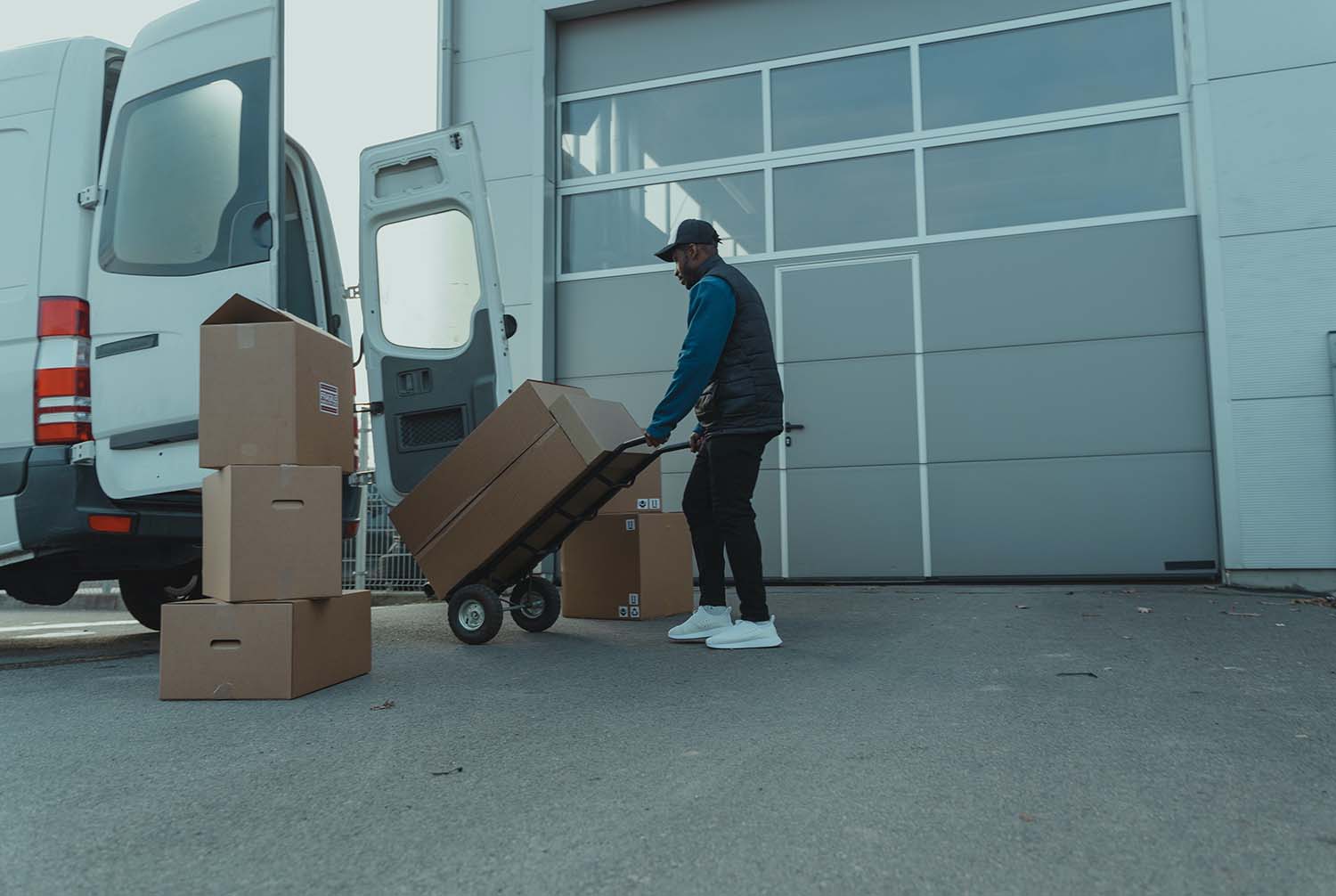How to Plan Delivery Routes
7 min read

Amazon revolutionized deliveries with its Prime offering that set the new standard for fast delivery. Helping Amazon to achieve this feat is effective delivery management. Now that they’ve paved the way, consumers expect everyone, not just Amazon, to meet this new high standard for fast delivery. In order to do this, you need to plan the best routes.
You can plan routes manually, but the process is difficult and time-consuming. Automated delivery route planning speeds up deliveries and saves money.
Jump to the section that interests you most:
- How to Plan Delivery Routes Manually
- 4 Downsides of Manually Planning Delivery Routes
- What Is a Delivery Route Planner?
- Save Time and Always Get the Fastest, Most Efficient Route With OptimoRoute
- Ditch Manual Route Planning and Optimize With OptimoRoute
How to Plan Delivery Routes Manually
Manual route planning is an outdated method of route optimization—automated route planning has been around since the late ‘60s. Despite this, manual workflows remain a common choice for small businesses, especially those that rely on an in-house delivery team. Manual route planning begins when the first order is received, either by a customer in the store or online. This task is often left in the hands of a single individual.
The manual routing process begins with customer orders. They may be written down on pieces of paper as delivery invoices, which contain information such as the delivery address and notes on the preferred delivery date or time. Often, these paper records are stored in folders or filing cabinets which can clutter a workspace. Some businesses may organize invoices with an Excel sheet to avoid that problem.
Once orders are received, regardless of how they are stored, the dedicated route manager will sort them into different groups based on factors noted on the invoice. Most likely, the delivery route planner will organize them by date and region, though this may vary depending on specific delivery needs. The route planner can use these groups of orders to begin finding the shortest route from one delivery location to the next. They can do this by entering delivery addresses into a map to get driving directions and estimate the travel time between stops. Then the route can be assigned to a driver to execute and complete the deliveries.
4 Downsides of Manually Planning Delivery Routes
Manual route management, as a general practice, is far from perfect. It leaves room for potential errors that may be costly to your delivery business.
You won’t get the fastest route
Manual route planning requires you to consider a lot of factors—too many to be accurately assessed if you have more than a handful of deliveries to route. You’ll need to account for things like standard traffic patterns in the region you’re delivering, weather that may cause delays, and the time it takes to complete a delivery. That’s a lot to consider, especially when factors like traffic patterns or weather can change on a dime.
These factors can have a big impact on your deliveries. According to the Georgia Institute of Technology, weather conditions like rain can increase traffic delays by as much as 21%—and are nearly impossible to predict. As a result, accurately assessing all of these important factors manually takes far too much time. This means that many of them get overlooked during the manual planning process. Consequently, delivery drivers must problem solve on the fly when issues arise during delivery.
Incorrect or incomplete addresses lead to time lost on deliveries
When mapping multi-stop routes manually, every order and delivery provides an opportunity for human error. One missing or incorrect detail can throw the rest of the day’s plan into chaos, even if the rest of the route is perfectly planned. For example, if an address has an incorrect house number, a driver may waste time looking for a house that doesn’t exist, delaying the rest of the day’s deliveries and using up more fuel than may have been budgeted. Delivery drivers have limited resources for troubleshooting these types of problems while on the road.
Too many deliveries and too little manpower
Along with accounting for all of your deliveries and where drivers will complete them, you need to consider your available drivers and their schedules. If you don’t account for those factors, you may end up with more deliveries than you are realistically able to complete. After all, you can’t overwhelm one driver with unlimited stops—you need to ensure you have the manpower to complete the deliveries. Planning becomes more complicated when drivers take time off or change their availability. Even more problematic, with 40% of employees stating that they took a sick day during a 12 month period assessed by CareerBuilder, you’ll inevitably be faced with a last-minute driver shortage. When this happens, you’ll have to replan the day’s deliveries at the last minute, which may not be possible depending on the complexity of your delivery routes.
Delivery time windows and vehicle capacities
Some customers may have a specific date or time preference for their delivery. The customer may want their delivery to be completed at a time when the driver for that route is scheduled to be in another area, which makes it difficult to plan an optimal route. However, failing to meet customer needs can be costly to your business as the delivery experience is a make-or-break factor for 87% of customers when deciding whether or not to purchase from a company again.
Sure, you could try to address a customer’s needs by assigning the delivery to another driver. But that won’t work if your other trucks aren’t able to carry more weight. Along with every other detail to consider, manual route planning requires you to account for the payload capacity of each delivery vehicle. Overloading a truck with more than its payload capacity allows may lead to fines for regulatory noncompliance as well as costly maintenance and repairs.
What Is a Delivery Route Planner?
A delivery route planner is an app or piece of software that’s specifically designed to plan delivery routes and schedules for couriers or delivery fleets. Delivery route planners are different from free route planner apps like Google Maps or Waze that can get you from point A to point B, but can’t handle the addition of many stops or optimize routes for the fastest delivery.

Save Time and Always Get the Fastest, Most Efficient Route With OptimoRoute
OptimoRoute is a delivery route planner that automates the entire planning process, from order reception to delivery completion, eliminating all of the risk factors involved with manual planning.
Account for all workflow constraints and criteria
Utilizing route planning software eliminates the hassle of evaluating all of the delivery data by doing it for you. As part of OptimoRoute’s setup, you’ll enter information like driver schedules, break times, and vehicle payload capacity on the vehicles that need to be routed. After importing deliveries into the system, OptimoRoute can automatically create an optimized route that considers all of your unique delivery considerations.
For example, grocery deliveries run on a tight timeline that emphasizes last-mile delivery to avoid any produce spoiling. This means orders must be fulfilled quickly and delivered to their final destination just as fast. Meanwhile, planning a truck route requires much longer time frames and utilizes much larger weight capacities. Every business has something that makes its deliveries special—OptimoRoute is designed to cater to those needs no matter what they are.
Reduce fuel costs and maximize daily deliveries
Along with considering specific delivery details, OptimoRoute automatically looks for the most efficient delivery route by analyzing the time it takes to complete a delivery and the travel time between drop-off locations. More efficient routes help to save money and allow you to complete more in less time by reducing fuel consumption and travel time between deliveries.
Realtime Order Tracking and upfront notifications sent to customers ahead of delivery
OptimoRoute also provides your customers with Realtime Order Tracking, which helps to improve the customer experience. The system can automatically send SMS updates directly to the customer’s mobile device to let them know their order is on its way—or update them if a minor hiccup like an inventory mix-up causes a delivery delay. According to our own data, almost 25% of shoppers report that this feature is a motivating factor when buying from a company—this means that order tracking can help improve customer satisfaction.
Offer Proof of Delivery and Live ETA
Providing your customers with updates throughout the delivery is essential to the customer experience, but OptimoRoute takes this feature one step further by providing a Live ETA for delivery drivers. Live ETA shows you exactly where drivers are and when they’ll arrive at the delivery location.
When a delivery is completed, drivers can enter details from the delivery, snap a photo, and even collect a signature for the delivery directly within the OptimoRoute Mobile App. This provides a complete record and proof of delivery, allowing you to immediately investigate if a customer calls with a question or complaint about their order. At the first sign of trouble, you can instantly pull up the Proof of Delivery to view the details and can begin working to resolve the customer issue without having to track down drivers to get their version of the story.
Track drivers live and analyze driver performance
OptimoRoute’s live tracking feature provides you with insight into where your drivers are and the progress they’ve made on the day’s deliveries. With this information, you can ensure that drivers complete deliveries on time and check the proof of delivery notes to ensure the delivery was successful.
Ditch Manual Route Planning and Optimize With OptimoRoute
The overwhelming number of factors to consider make manual route planning impractical and ineffective. Implement routing software like OptimoRoute to automate the planning process and save time while improving your delivery operations.
To see for yourself how OptimoRoute can automate your route planning, test our software free for 30 days with no obligation.
Try OptimoRoute™ for Free
No installation or credit card required


